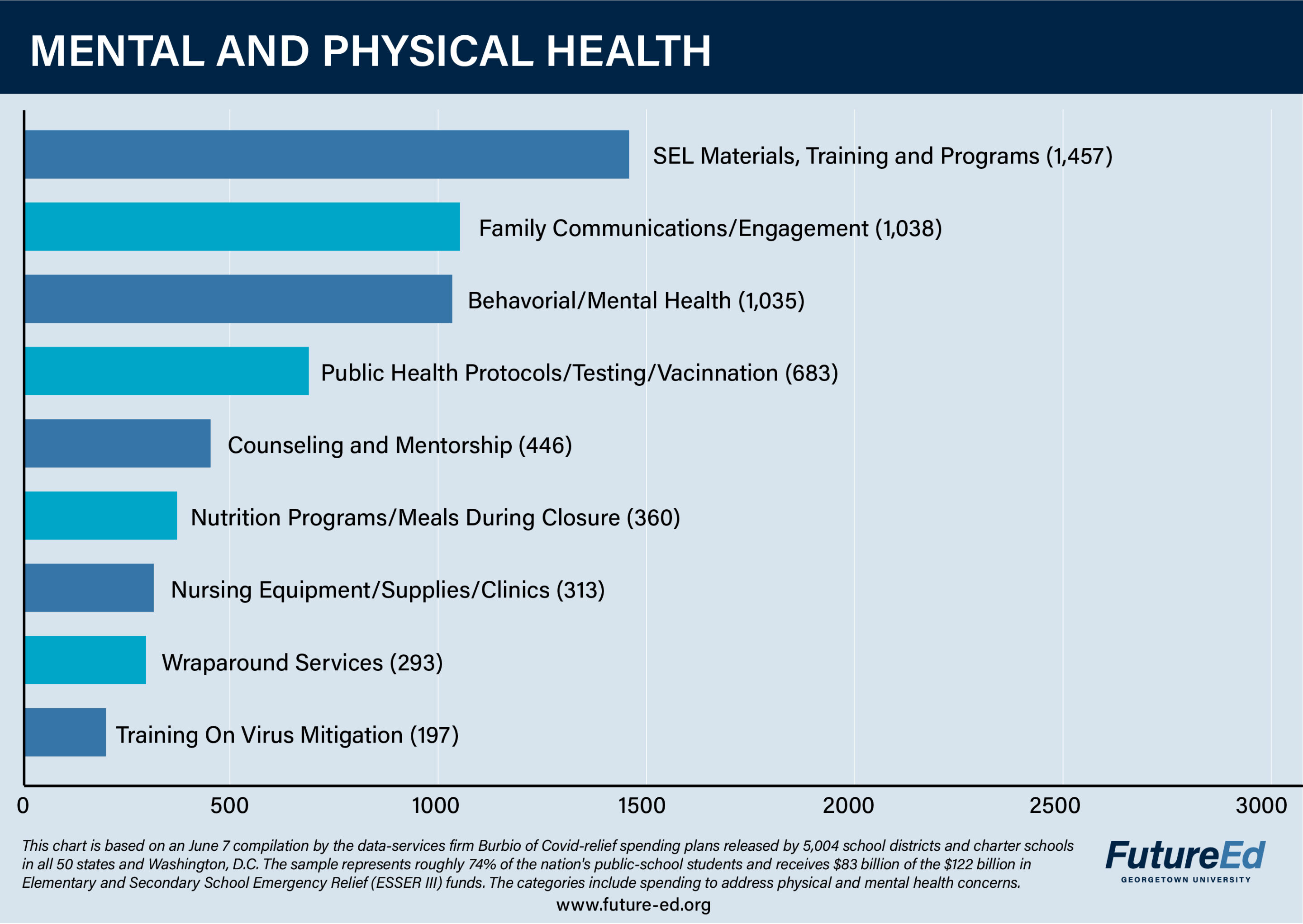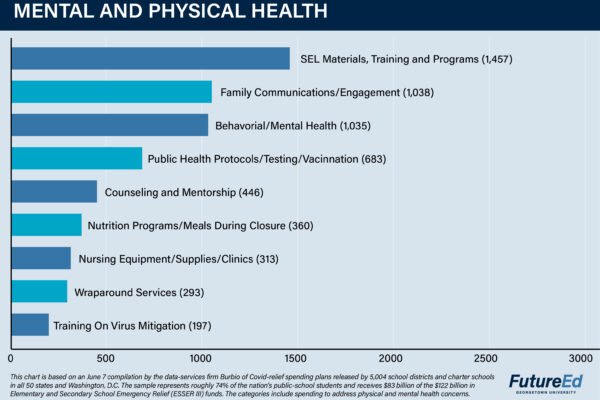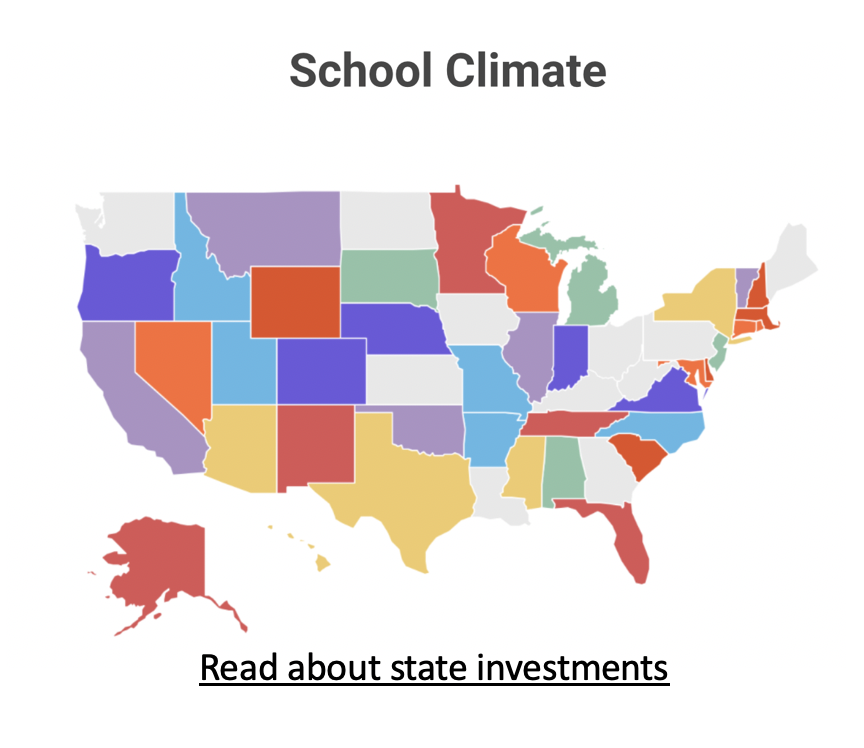
The pandemic presents twin health risks for students and staff. The initial concern, and much of the spending in the early rounds of Covid relief aid, went toward preventing the spread of Covid and keeping students and staff members healthy. Amid the isolation and trauma of the past year, though, mental health emerged as a serious concern. Depression, anxiety, and thoughts of suicide increased in many populations. As schools reopened in the fall, behavioral outbursts among students underscored the need to improve school climate and adopt an equitable approach to discipline.
Spending on social-emotional learning–combining three Burbio categories for curriculum, training and programs–topped the list of how districts plan to invest Covid relief money in this category. Family and community engagement are also priorities, as are counseling and mentoring. Many districts plan to continue spending on public health protocols, vaccinations, and testing.
View our regional analysis of spending plans
View our analysis of rural, urban and suburban spending plans
Read about research and best practices for:
- Mental Health Interventions
- School-Based Health Services
- Mentoring
- Home Visits
- Equitable School Discipline
- Teacher Mindset Training
More resources:
- The Covid Relief Playbook
- The Attendance Playbook
- Teacher Mindsets
- Advancing Student and Staff Health With Covid Relief Funding
- National Student Support Accelerator
- Education Department: Covid-19 Handbook
- Education Department: Supporting Students Social, Emotional, Behavioral and Mental Health Needs
- ERS: Using ESSER Funds for Social-Emotional Supports
- EdResearch for Recovery: Building High Quality School Counseling Programs
- Education Trust: State Policies Supporting Social, Emotional and Academic Development
- AASA and Schoolhouse Connection: Identifying and Supporting Students Experiencing Homelessness

